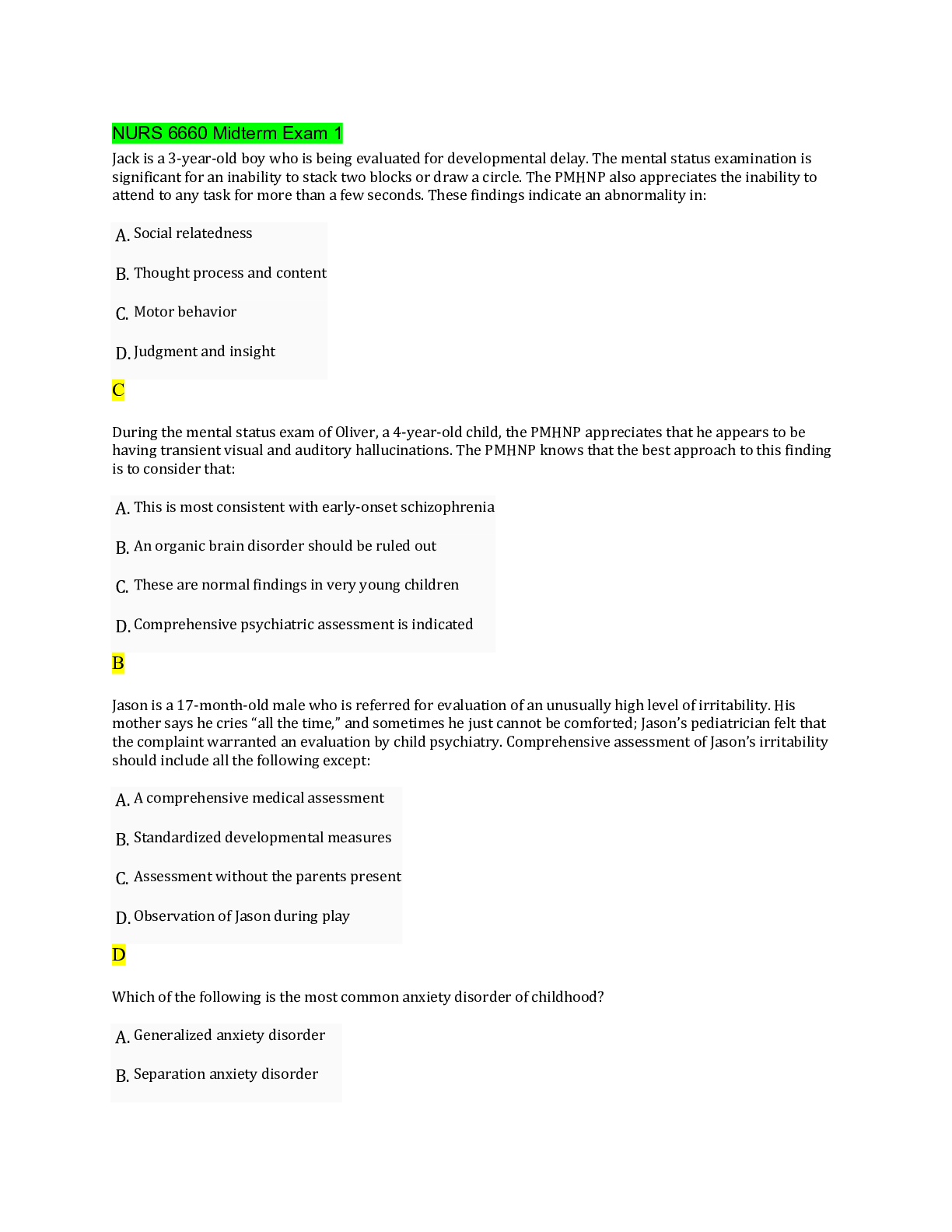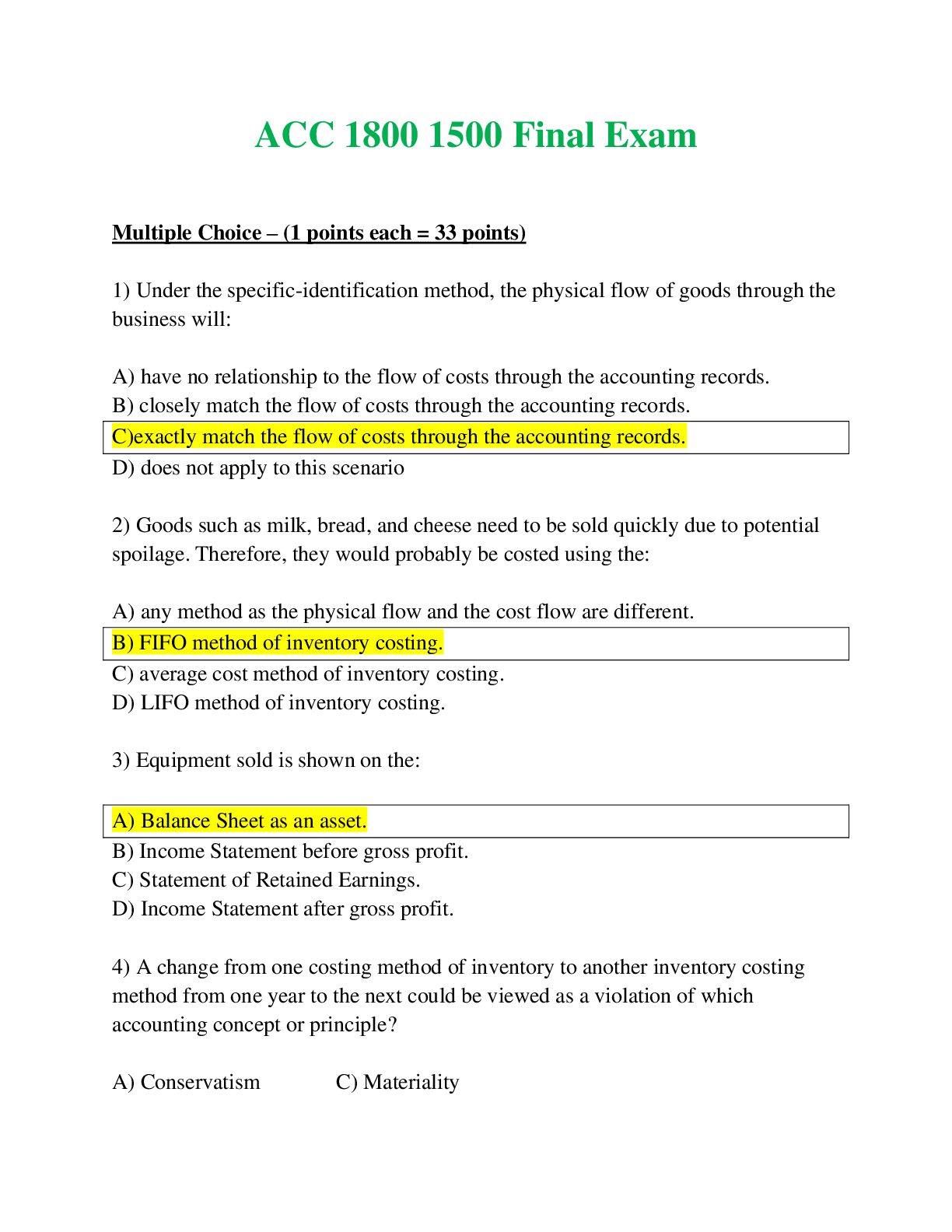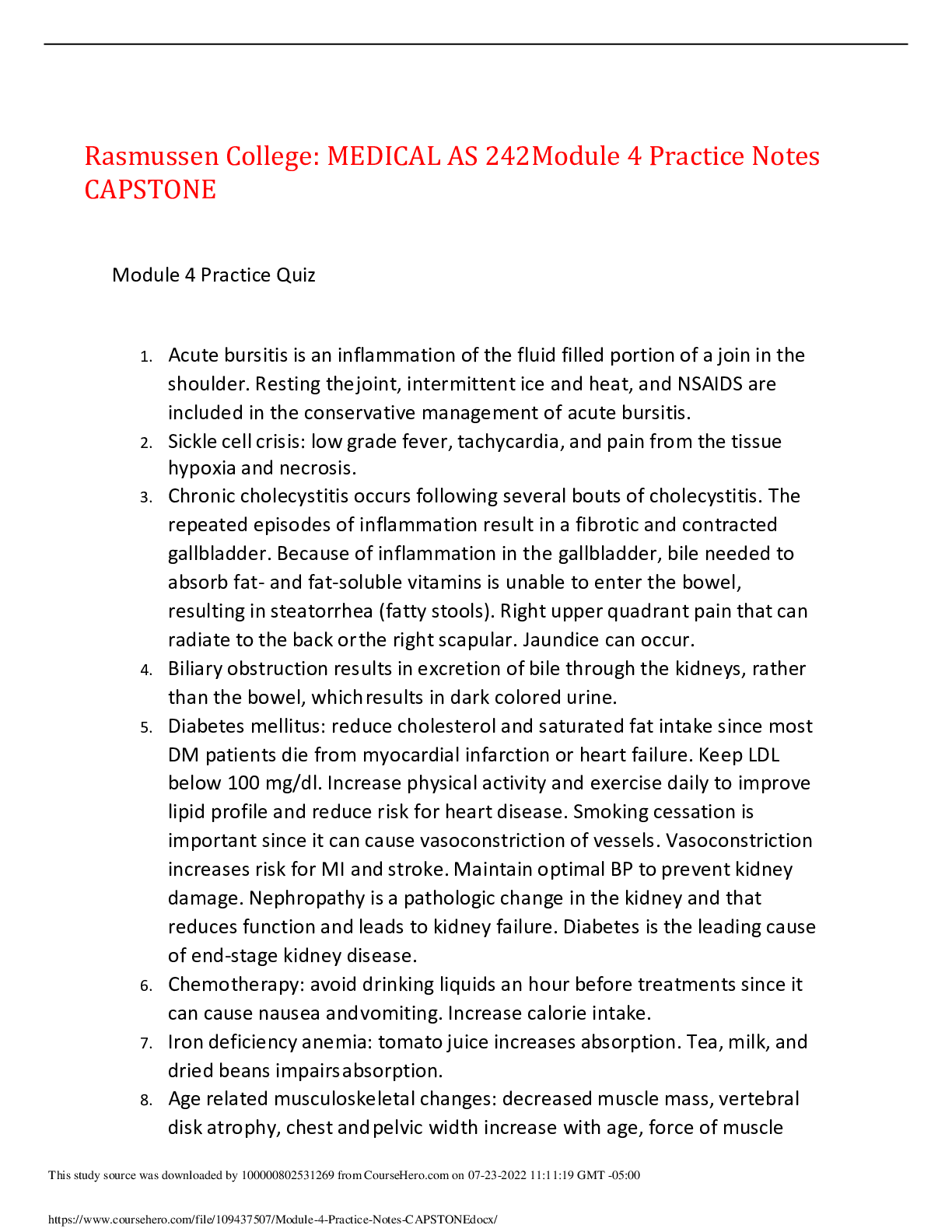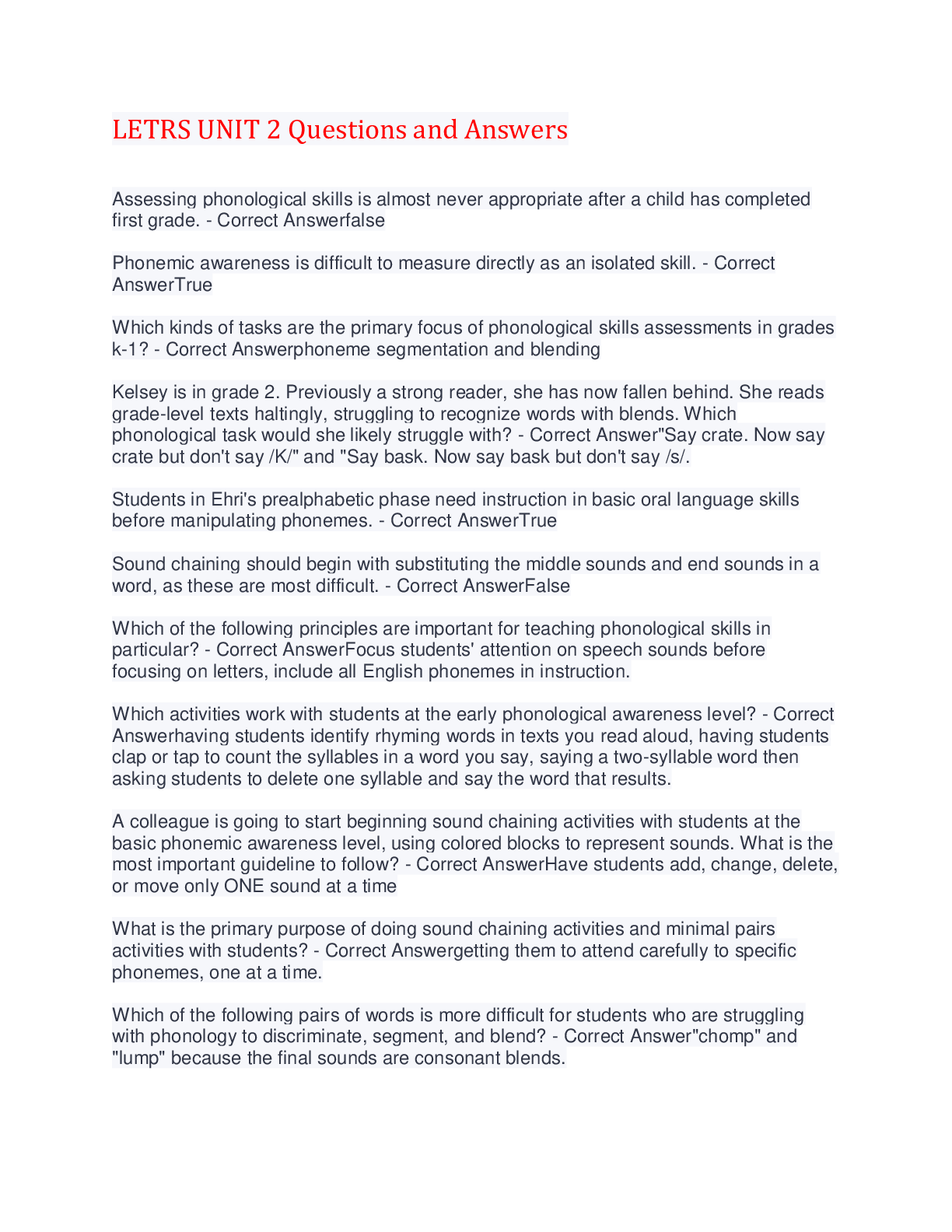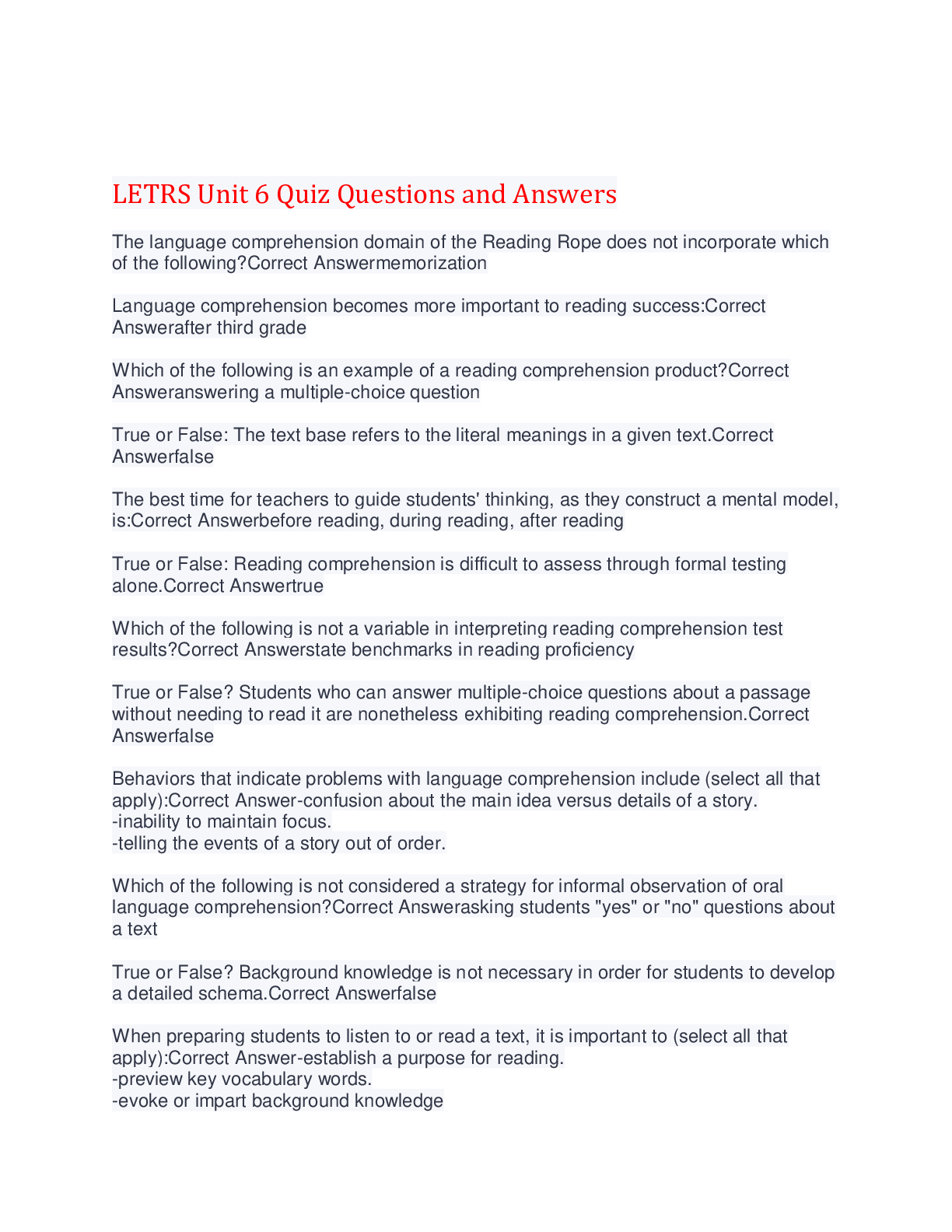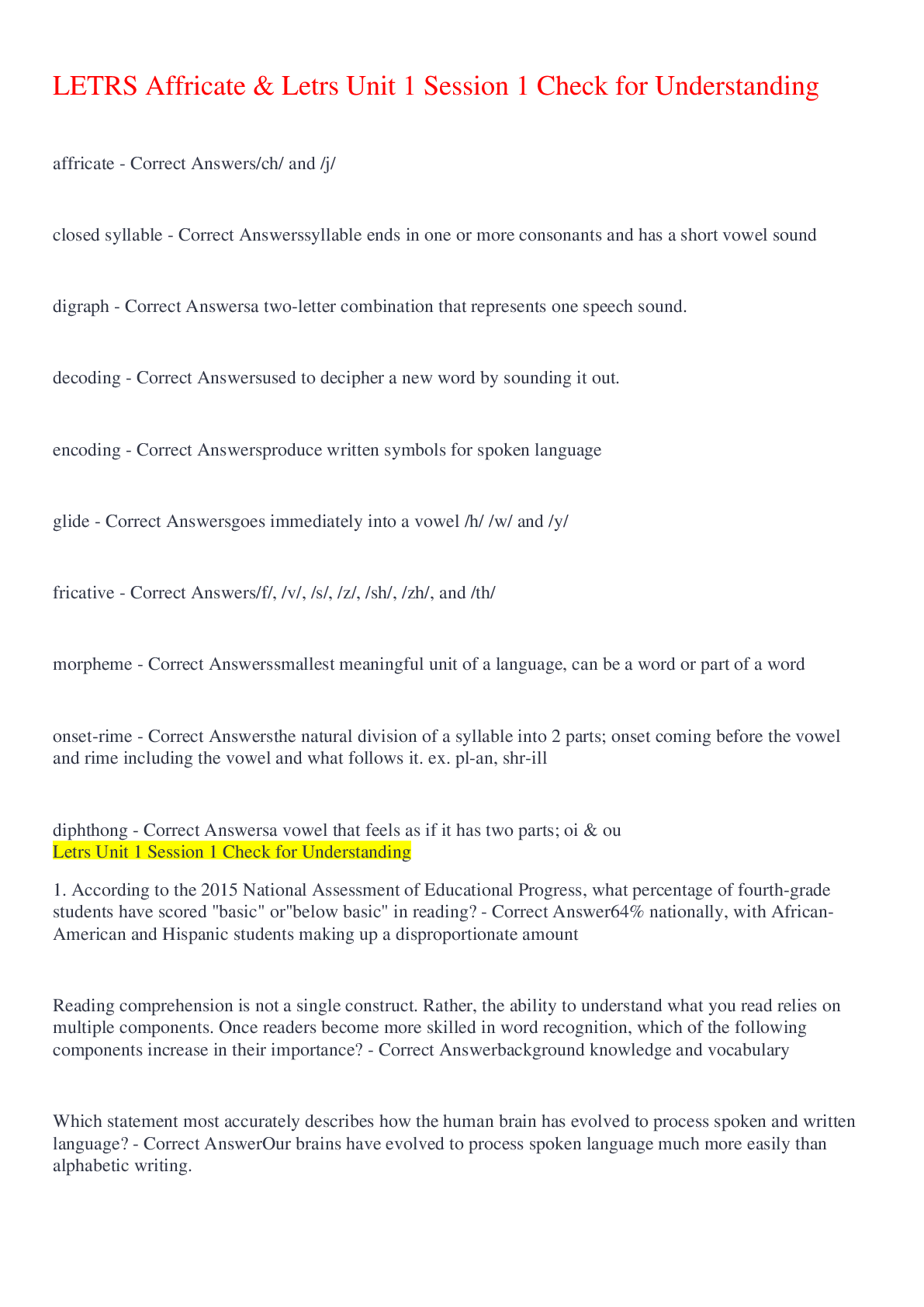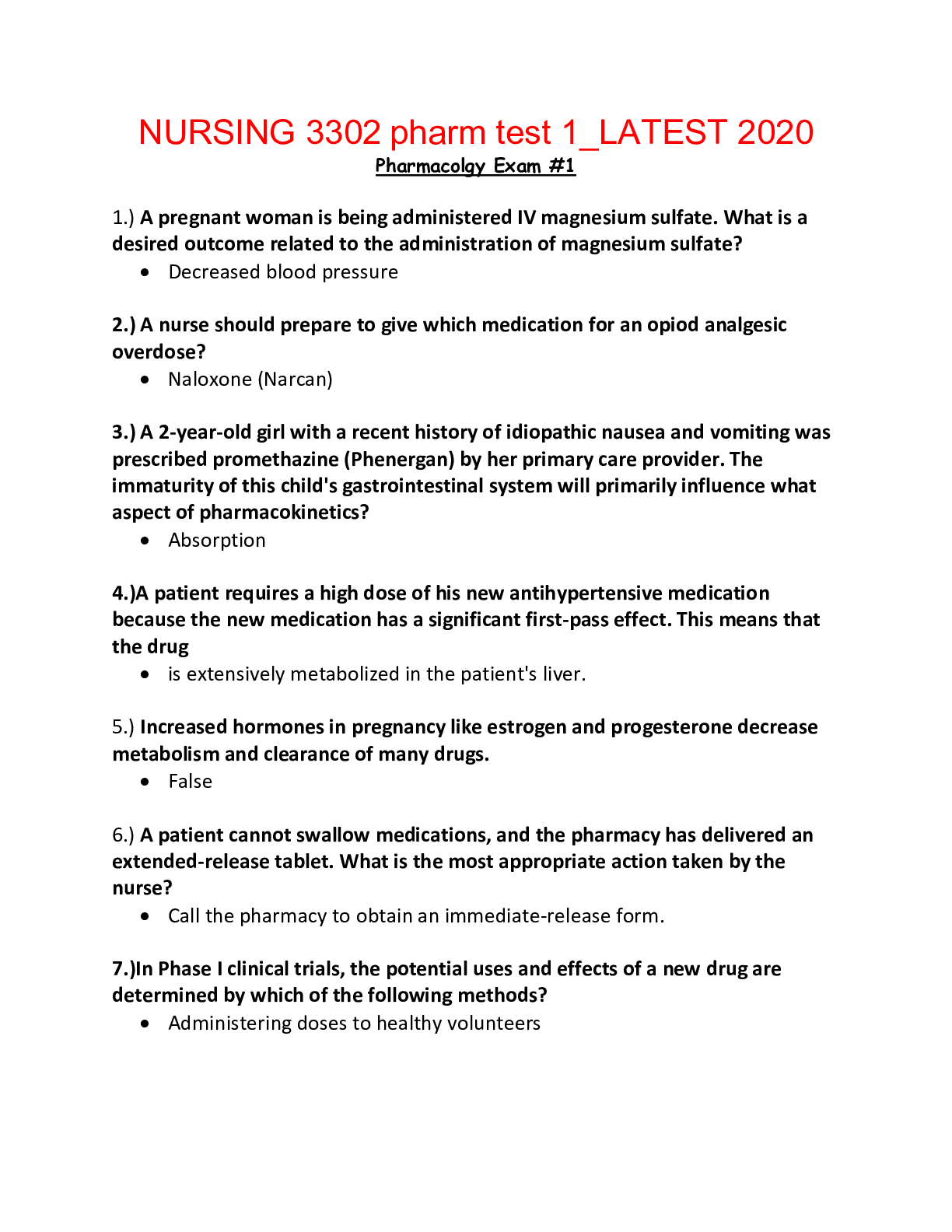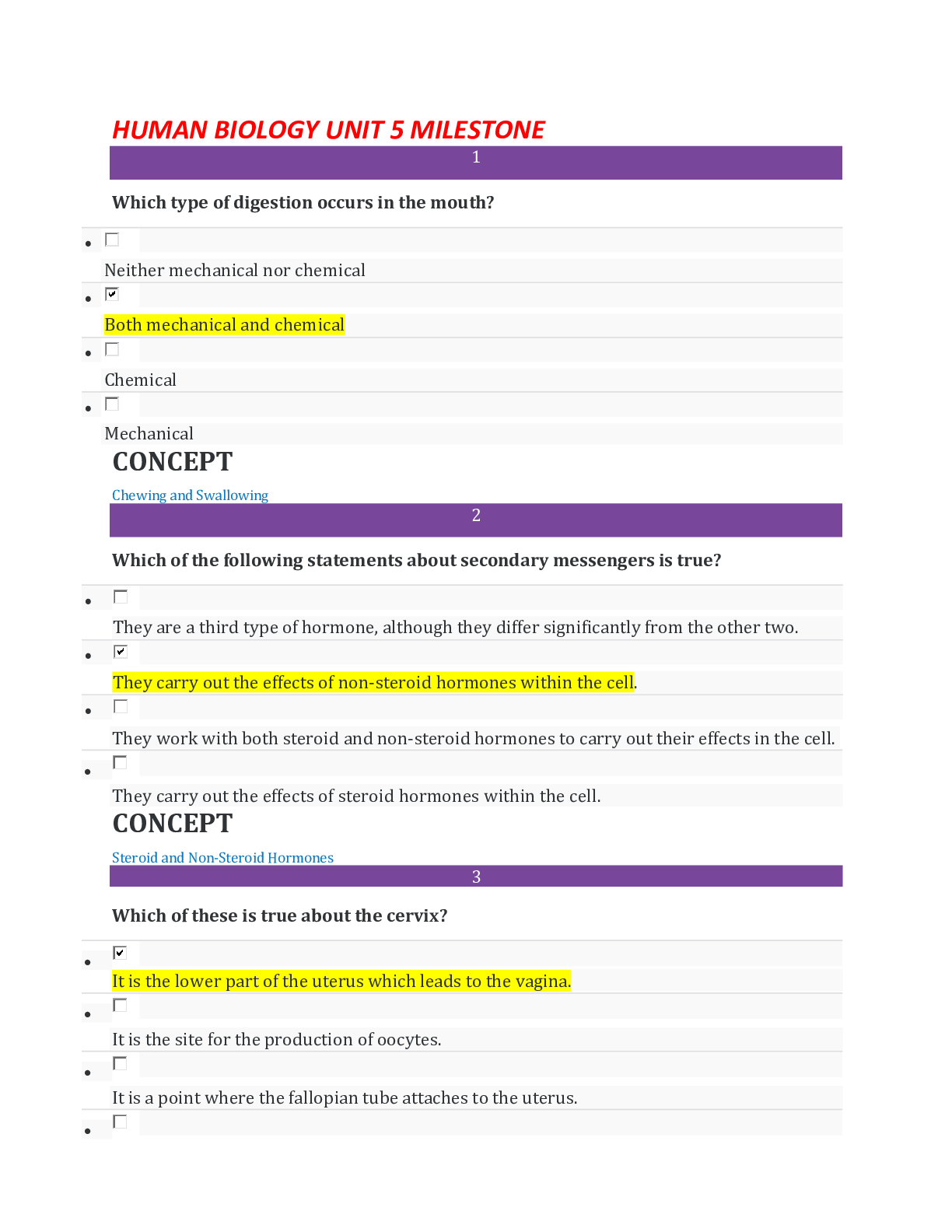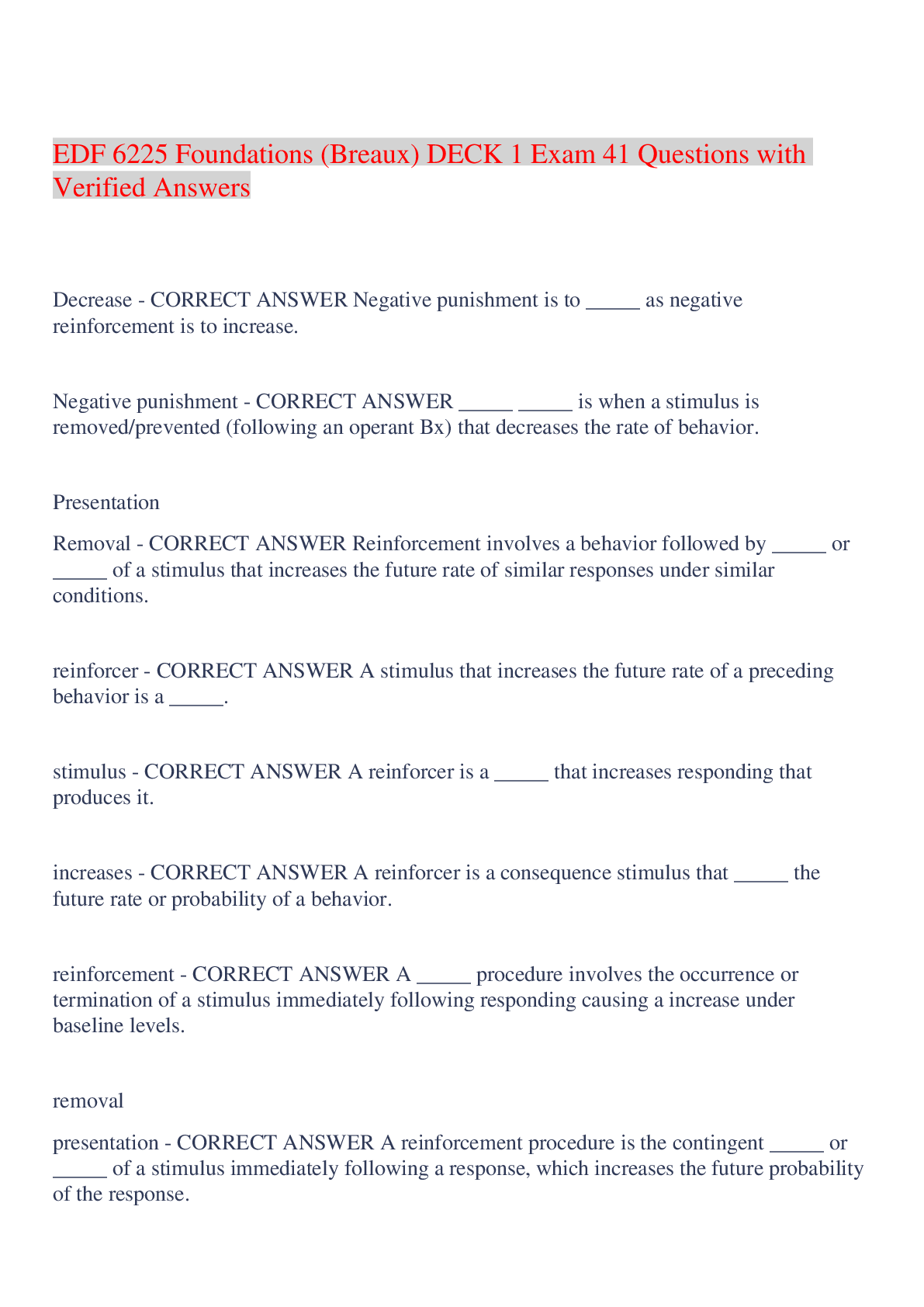AGNP BOARD EXAM QUESTIONSHematology Assessment ( 24 Questions),100% CORRECT
Document Content and Description Below
If a newborn develops a cephalohematoma, the newborn is at an increased risk for: infection. jaundice. caput succedaneum. erythema toxicum. Question: A twelve-month-old was r... ecently diagnosed with Acquired Immunodeficiency Syndrome (AIDS). The mother asks the nurse practitioner "How could my child have acquired AIDS?" The best response from the nurse practitioner should be that: "Children under two years of age usually acquire AIDS: by sharing car seats with an HIV infected toddler." because the child may have been sexually abused by someone who was HIV positive." perinatally through an HIV infected mother." through casual contact with an HIV infected individual in a day care center." Question: Which ethnicity is associated with glucose-6-phosphate-dehydrogenase (G-6-PD) deficiency? American Indian black Asian Hispanic Question: The blood lead level that requires further testing and monitoring in children is: 3 mcg/dL. 5 mcg/dL. 7 mcg/dL. 9 mcg/dL. Question: Which of the following foods contains the LEAST amount of folic acid? Dairy Green leafy vegetables Liver Fruits Question: Which assessment finding is consistent with pernicious anemia? Facial palsy Nuchal rigidity Priapism Peripheral neuropathy Question: The infant with the lowest risk of developing elevated levels of bilirubin is the one who: is feeding poorly or whose feedings are delayed for several hours. has developed a cephalhematoma. is the second birth to an Rh negative mother. breast feeds within the first hour of life. Question: Patients who develop pica have a deficiency in: folic acid. lead. magnesium. iron. Question: Which of the following symptoms is associated with iron deficiency anemia? Atrophic glossitis Oral candida Melanoglossia Transient lingual papillitis Question: Folic acid deficiency is an example of which type of anemia? Normocytic Macrocytic Microcytic Hemolytic Question: Which situation would put the patient at the LEAST risk for developing lead toxicity? Being a plumber Residing in a home built before 1988 Having a history of gout Living near a busy highway. Question: Which patient is most likely to carry the alpha thalassemia anemia trait? A 45-year-old black man A 32-year-old Filipino man A 24-year-old Italian woman A 19-year-old Greek woman Question: Hemophilia type A is a deficiency of factor: VIII. IX. XI. IV. Question: A child with sickle cell anemia presents with a history of sudden onset of rapid breathing with left upper quadrant (LUQ) tenderness upon palpation. The child is most likely experiencing a (an): aplastic crisis. sequestration crisis. vaso-occlusive crisis. hemarthrosis crisis. Question: The nurse practitioner differentiates physiologic jaundice from pathologic jaundice by assessment of the: degree of jaundice of the skin. timing of the onset of the jaundice. maternal history of drugs/medications. level of bilirubin in the blood. Question: A symptom of severe hemorrhagic shock (Class IV) does NOT include: tachycardia. hypotension. tachypnea. hypertension. Question: An assessment finding in a patient diagnosed with von Willebrand disease is: hypopigmentation. café au lait spots. ecchymosis. hyperpigmentation. Question: The nurse practitioner should base a response to a parent's question about the prognosis of acute lymphoblastic leukemia (ALL) on which of the following statements? Leukemia is a fatal disease even though chemotherapy provides increasingly longer periods of remission. Research to find a cure for childhood cancers is very active. A majority of children go into remission and remain symptom free when treatment is completed. It usually takes several months of chemotherapy to achieve a remission. Question: The parents of a child with sickle cell anemia are asking for information about future pregnancies. The nurse practitioner should respond by telling them that with any future pregnancy they will have a: 1 in 4 chance of producing a child with sickle cell trait. 1 in 4 chance of producing a child with sickle cell anemia. 1 in 2 chance of producing a child with neither sickle cell disease nor trait. 1 in 2 chance of producing a child with the sickle cell anemia. Question: Which one of the following does NOT produce anemia of chronic disease? Systemic lupus Rheumatoid arthritis Osteomyelitis Osteoporosis Question: An example of a vaso-occlusive crisis of the pulmonary vasculature seen in patients with sickle cell anemia is: acute chest syndrome. pulmonary embolism. pneumonia. pulmonary edema. Question: The most common malignancy diagnosed in children is: chronic myelogenous leukemia (CML). chronic lymphocytic leukemia (CLL). acute lymphocytic leukemia (ALL). acute myeloid leukemia (AML). Question: When educating a patient about iron replacement, the provider advises to take the supplement: with vitamin C. with a glass of milk. on a full stomach. on an empty stomach. Question: A possible assessment finding in patients taking oral iron supplements for anemia is: steatorrhea. hematochezia. constipation. beeturia. [Show More]
Last updated: 2 years ago
Preview 1 out of 10 pages

Buy this document to get the full access instantly
Instant Download Access after purchase
Buy NowInstant download
We Accept:

Reviews( 0 )
$13.00
Can't find what you want? Try our AI powered Search
Document information
Connected school, study & course
About the document
Uploaded On
Jan 19, 2021
Number of pages
10
Written in
Additional information
This document has been written for:
Uploaded
Jan 19, 2021
Downloads
0
Views
49


